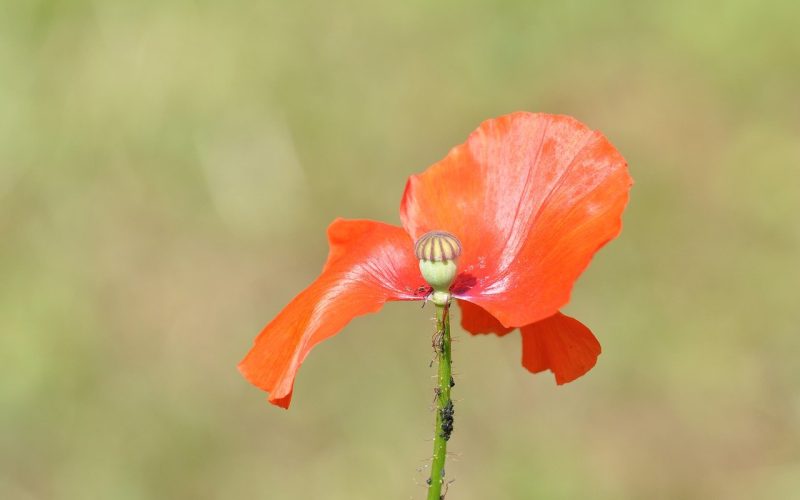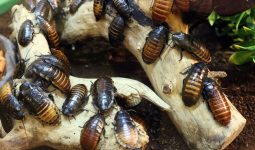This article will cover different types of incomplete flowers and briefly describe each.
Many flowers have both sets of sepals (calyx), petals (corolla), and sexual organs (stamens (androecium) and a pistil), making a full perianth (gynoecium). One describes such a blossom as “complete.”
However, some species produce “incomplete” blooms. Some imperfect flowers are “perfect” because they have both sexual organs. As a result, they either lack a perianth or have a simple calyx and no corolla.
In other words, examples of incomplete flowers include those that lack one or more of the four fundamental floral whorls and can be either perfect or imperfect.
Incomplete flowers can be found in the families Cucurbitaceae, Euphorbia, Asteraceae, Salicaceae, Garryaceae, Anacardiaceae, Fagaceae, and others.
Also, sepals (calyx), petals (corolla), stamens (male reproductive component), and pistils (female reproductive part) are the four main floral whorls that make up a flower’s structure.
An incomplete flower is one or more of the four fundamental floral whorls. Here are some of the different types of incomplete flowers.
1. Squash Plant

A member of the Cucurbitaceae family is squash. Although one of the reproductive components of its flower—either the stamen or the carpel—is absent, it does have two genders. Male squash blooms do not develop into squashes; only female squash flowers do.
2. Bittergourd
The bitter gourd plant is a member of the Cucurbitaceae family. Its plant produces both male and female flowers, but because neither the male nor the female reproductive components are present in a single blossom, it is not a complete flower. The bitter gourd’s blossom is thus lacking.
3. Sweetcorn
The Poaceae family includes sweet corn called pole corn or sugar corn. Because corn lacks petals, it produces both male and female flowers. As a result, it is seen as an unfinished blossom. This is one of the different types of incomplete flowers.
4. American Elm

Elms are pollinated by the wind, like many other trees. Winter buds shield the flowers, allowing them to open up before the leaves, eliminating the need for sepals. The fact that wind pollinates makes “promotion” redundant, which is why the flowers lack petals.
5. Black Walnut
Brown walnut Many wind-pollinated trees are monoecious, meaning that you can find both types of blooms on a single tree even though the flowers are unisexual. They frequently produce little, solitary female flowers that are delivered singly.
In contrast, male flowers are typically produced in vast numbers and are shown on drooping catkins (or at most in pairs or few-flowered clusters). Most walnut/hickory (Juglandaceae) and oak/beech/chestnut (Fagaceae) species fit this pattern.
6. Pumpkin
A member of the Cucurbits family, pumpkins. Because the pumpkin flower lacks the stamen or the pistil, it is considered an unfinished flower. This is one of the different types of incomplete flowers.
7. Watermelon
A member of the Cucurbitae family is the watermelon. The blooms of the watermelon are known as Citrullus vulgaris. Since sepals and petals have not yet developed, neither the male nor the female flowers have a gynoecium, making them incomplete and flawed blooms.
8. Eastern Cottonwood
Cottonwood in the east. In dioecious species, the male and female are entirely distinct. A notable example is the willow, aspen, and cottonwood family (Salicaceae). Wind pollinates cottonwoods, which produce both types of flowers in hanging catkins.
Note the pistillate (female) blooms’ greatly extended stigmatic surface. Catkins of Populus deltoides Oriental cottonwood, a boxelder maple tree. Boxelder is solely dioecious, in contrast to the majority of our other maples, which are monoecious.
Both varieties have long pedicels that increase exposure to the pollen-carrying breeze and are produced in drooping clusters. This is one type of incomplete flower.
9. American Holly Tree
American holly is a member of the Aquifoliaceae family. Since each American holly tree is either male or female, the blooms produced by the entire tree will be incomplete since they lack stamens or pistils.
10. Papaya
The papaya belongs to the Caricaceae family. Both male and female flowers can be seen on papaya trees in this tree. Papaya flowers are incomplete because male papaya flowers lack the gynoecium whorl, and female papaya flowers lack the androecium whorl.
11. Begonia
Begoniaceae is the family that includes begonia. Begonia flowers are viewed as partial and imperfect. It is monoecious because both sexes are present on the same tree but do not coexist in the same bloom.
12. Cucumber
The Cucurbita family includes the cucumber. Each plant develops a unique male and female bloom. Therefore, cucumber flowers are flawed and unfinished.
13. Oaks
Members of the beech family include oaks. Oak flowers are incomplete since they typically have a pendulous shape and a reduced or absent perianth.
14. Caltha
The Ranunculaceae family includes the perennial flowering plant genus Caltha, which has rhizomatous roots. It is without petals. As a result, floral whorls are lacking.
15. Clematis
The plant genus Clematis belongs to the Ranunculaceae family. The clematis flower is considered an unfinished flower since its petals take the shape of sepals, and no petals are frequently seen.
16. Sunflower Ray Floret
The family that includes the sunflower is the daisy one. Since a sunflower comprises numerous tiny individual blooms, it is not a single bloom. Due to the absence of stamen and pistil, the sunflower ray floret is sterile and insufficient as a flower.
17. Marijuana
The Hemp flower family includes marijuana. Most hemp flowers are classified as incomplete because they are incompletely dioecious, which means that both sexes of the flower are present on the same plant but not in a single flower.
18. Date Palm
The palm family includes date palms. Date palms are dioecious plants because they have blossomed with male and female flowers on different trees. Date palms, as a result, have unfinished blossoms.
19. Mulberry
The genus Morus contains mulberries. Due to the monoecious, imperfect, and incomplete nature of mulberry plants, the blossoms are thought to be incomplete. The mulberry blossom lacks one of the four main floral whorls. This is one of the different types of incomplete flowers.
20. Codiaeum
The Codiaeum plant is a member of the Spurges family (Euphorbia). Plants of the genus Codiaeum produce actinomorphic, imperfect, and monoecious flowers in pendular spikes that emerge from the axils of the leaves. The term “incomplete flowers” refers to Codiaeum blooms.
21. Jatropha
Jatropha is a member of the Spurges family. Also, Jatropha curcas produces separate male and female flowers on the same plant as opposed to a single blossom since its flowers are both unisexual and monoecious. Jatropha blooms are, therefore, thought of as incomplete yet imperfect blossoms.
22. Omphalea
A genus of tropical trees and shrubs called Omphalea is a member of the spurge family of flowering plants. On the same plant, male and female blooms of the same sex can frequently be seen. The flower is considered lacking in petals because they are rarely seen.








